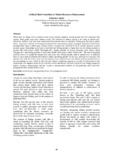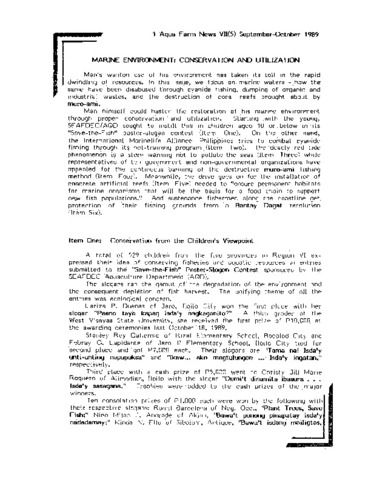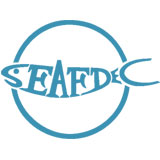Artificial Reefs Contribute to Marine Resources Enhancement
Share
นามธรรม
When there are things such as sunken vessels in sea bottoms, Japanese ancient people knew by experience that various fishes gather near these sunken vessels. The function of sunken vessels is the same as natural reef. Therefore, artificial reefs had been constructed from ancient times as auxiliary fishing gear that aim to gather fishes. At present, artificial reef fishing ground had been constructed to gather, propagate and protect fishes from larval/juvenile stage to adult stage, because fishery resources are observed to be in extreme decrease in their juvenile stages. Depending on the scale of artificial reef fishing ground, in Japan there are the fishing grounds of around 400 cubic meters called 'Namigata-sho', fishing grounds of several thousand cubic meters called 'Oogata-sho', and fishing grounds of more than 30,000 cubic meters called 'Jinkou-sho'. The aim of installing artificial reefs is to expand the natural reefs and create new fishing grounds equal to natural reefs. In addition, there is a new-type of artificial reef which is called 'upwelling mound'. If this new artificial reef can raise rich nutrient salts near the bottom layer into the euphotic zone, artificial reefs will enhance primary productivity of the surrounding sea area, which in turn will raise fishery production capacity as a result. For discussion in this Symposium, two Japanese artificial reef activities will be introduced. The first is artificial reef fishing ground for marine resources enhancement, and the second is measurement method on fish-gathering effect and fish propagation effect around artificial reefs.
การอ้างอิง
Akeda, S. (2016). Artificial reefs contribute to marine resources enhancement. In H. Kawamura, T. Iwata, Y. Theparoonrat, N. Manajit, & V. T. Sulit (Eds.), Consolidating the Strategies for Fishery Resources Enhancement in Southeast Asia. Proceedings of the Symposium on Strategy for Fisheries Resources Enhancement in the Southeast Asian Region, Pattaya, Thailand, 27-30 July 2015 (pp. 49-53). Samutprakan, Thailand: Training Department, Southeast Asian Fisheries Development Center.
เรื่อง
รายการที่เกี่ยวข้อง
แสดงรายการที่เกี่ยวข้องตามชื่อผู้แต่งผู้สร้างและเรื่อง
-
Marine environment: Conservation and utilization
Carreon-Lagoc, Julia; Southeast Asian Fisheries Development Center, Aquaculture Department (Aquaculture Department, Southeast Asian Fisheries Development Center, 1989) -
Community-based Stock Enhancement of Abalone, Haliotis asinina in Sagay Marine Reserve: Achievements, Limitations and Directions
Salayo, Nerissa D.; Castel, Raisa Joy G.; Barrido, Rafael T.; Tormon, Dianne Hope M.; Azuma, Teruo (Training Department, Southeast Asian Fisheries Development Center, 2016)The Sagay Marine Reserve (SMR) under the National Integrated Protected Area System (NIPAS) is one of the many reef areas in the Visayan Sea in the central part of the Philippine archipelago. The SMR covers 32,000 ha or 59% ... -
Community-based stock enhancement of abalone, Haliotis asinina in Sagay marine reserve: Achievements, limitations and directions
Salayo, Nerissa D.; Castel, Raisa Joy G.; Barrido, Rafael T.; Tormon, Dianne Hope M.; Azuma, Teruo (Training Department, Southeast Asian Fisheries Development Center, 2016)The Sagay Marine Reserve (SMR) under the National Integrated Protected Area System (NIPAS) is one of the many reef areas in the Visayan Sea in the central part of the Philippine archipelago. The SMR covers 32,000 ha or 59% ...





